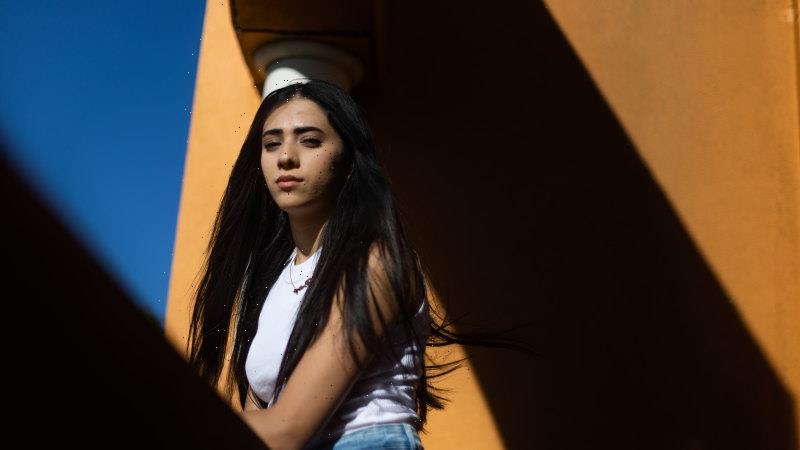More than 19,000 refugees in Australia will finally be able to qualify for permanent residency after a decade on temporary protection visas, in a major policy change the federal government will unveil in the new year.
The change will mean the refugees would be able to freely leave the country and return, to access secure work or full social security benefits and to send for their families to come to Australia.
Maryam and her son are on temporary protection visas and their lives will be transformed if given permanent residency.Credit:Nick Moir
Iranian woman Maryam, who fled to Australia a decade ago, said she had dreamed of seeing her parents and three sisters again and building a more stable life for her 12-year-old son in Sydney.
Being on a temporary protection visa meant the 40-year-old single mother, who asked that her surname not be used to protect her family in Iran, had been unable to get a steady job or invite her family to visit her.
Permanent residency would mean her son will be able to go to university under the HECS scheme.
“It will mean I can see my family again after 10 years, so I can hug them and face-to-face say that I love them and ‘I miss you’,” she said. “My heart is pounding because I have been waiting every second during the past 10 years for this news.”
But the fate of another 12,000 asylum seekers who are still seeking refugee protection is still to be decided by Immigration Minister Andrew Giles, who is working through options to review their status.
This includes those whose applications for temporary protection visas have been rejected, who are appealing their rejection or who are still awaiting their results.
The policy shift on visas is likely to be criticised by the federal opposition, but Labor has repeatedly stated it is committed to Operation Sovereign Borders and turning back asylum seeker boats, with a vessel containing 13 Iraqis sent back to Indonesia last week.
Home Affairs Minister Clare O’Neil said, “we said we would do this and we will – deliberately and carefully”.
“Every single person who has attempted to enter Australia by boat has been returned by this government,” she said.
The almost 31,000 asylum seekers affected by Labor’s policy shift mostly arrived in Australia by boat between August 2012 and January 2014 and were designated the “legacy caseload” by the former Abbott government.
The majority of the 19,000 refugees who will be able to become permanent residents come from Iraq, Afghanistan, Iran, Myanmar and Sri Lanka and currently hold three-year temporary protection visas (known as TPVs) or a similar five-year Safe Haven Enterprise Visas (SHEVs), which they have had to renew at least once over the last decade.
This masthead has confirmed with two senior sources in the Albanese government that Giles is finalising details of the policy change, which Labor took to the last federal election.
Giles was contacted for comment.
The change will allow 19,000 people to move from a temporary protection or safe haven visa to a Resolution of Status Visa. They will then be able to apply for permanent residency in Australia.
The temporary protection visa was introduced by the Howard government in 1999. It allowed people who were found to be refugees the right to work and access to medical and welfare services, but it did not allow family reunion or work rights and was heavily criticised by refugee advocates.
These visas were abolished by the Rudd government in 2008 but were reintroduced by the Abbott government in 2014 as one of a suite of measures in Operation Sovereign Borders to stop people being smuggled to Australia in boats.
Betia Shakiba and her family tried to make it to Australia from Indonesia 13 times before they were successful.Credit:Jason South
Betia Shakiba’s family fled Iran and attempted to cross from Indonesia to Australia 13 times before they finally made land in 2012 and claimed asylum, when she was only 14.
She said the safe haven visa her family is on – including her father and younger brother – meant they had been “living in limbo for 10 years now” in north-western Melbourne.
“You don’t know whether you could call Australia home or not,” Shakiba said.
Being granted permanent residency “would finally mean that I would not be classed as a second-class citizen in Australia”.
Last month, independent MPs Andrew Wilkie and Monique Ryan both questioned Giles in parliament about when Labor would implement its promise to abolish TPVs and SHEVs.
The minister told Wilkie that “it’s a commitment I am working towards realising, together with my friend the Minister for Home Affairs [Clare O’Neil]”, signalling the move was close.
David Manne, the executive director of Melbourne’s Refugee Legal Service, said the transformative change was “the right thing to do, it is common sense and humane.
“It would enable thousands of people to rebuild their lives with a true sense of security and belonging and to reunite with family, who they have been separated from for a decade,” he said.
Refugee advocate Paris Aristotle said: “ending a decade of mental anguish and enabling [asylum seekers] to finally be reunited with their spouses and children is the right and decent thing to do”.
NSW Labor MP for Auburn Lynda Voltz said many members of the Afghanistan community living in her western Sydney electorate were on temporary protection visas, living in crowded accommodation and aged in their 60s and 70s.
“It is unsustainable to have a system that requires them to work for the rest of their life in agriculture,” she said. “Any announcement that gives them some chance of permanency takes a huge burden off our local community.”
Cut through the noise of federal politics with news, views and expert analysis from Jacqueline Maley. Subscribers can sign up to our weekly Inside Politics newsletter here.
Most Viewed in Politics
From our partners
Source: Read Full Article


